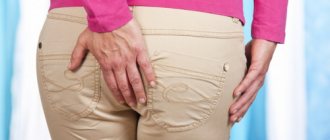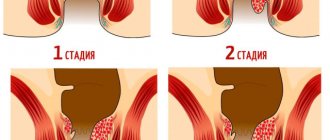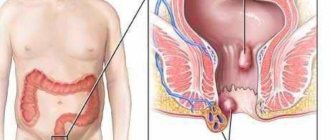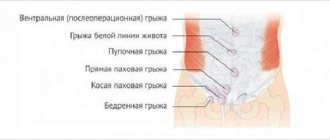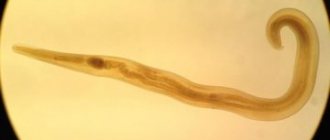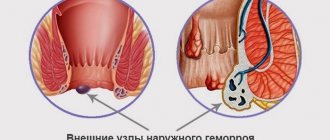From the article you will learn why women get hemorrhoids. You will also become acquainted with the most effective methods of treating this pathology.
Hemorrhoids are a rather painful disease that develops in the rectum or anus. This problem can occur in any person, regardless of gender, age and health status. But, unfortunately, it is the fair sex who are more often faced with this defect. This is due to the physiological characteristics of the female body, menstruation, pregnancy and childbirth.
Girls who are faced with this problem for the first time are embarrassed to tell even close people about it, and try to treat it on their own. Usually this position leads to aggravation of the disease and it becomes more difficult to fight it. So that you, too, do not have similar problems, let’s figure out together how hemorrhoids occur in women and how to treat them correctly.
Features of development
All people have hemorrhoids, or cushion-shaped collections of veins, that are found under the mucous membranes lining the lower part of the rectum and anus.
It is believed that there are three hemorrhoids located on the terminal branches of the rectal artery. They are more often in a dormant state.
Inflammation occurs when the veins become swollen, enlarged, and appear similar to varicose veins in the legs. Female hemorrhoids most often occur after pregnancy and childbirth.
Hardware methods for treating hemorrhoids
Hardware medicine is a type of clinical methods for treating hemorrhoidal disease. As a rule, such techniques produce a therapeutic effect through the use of a special device that directly affects the affected area.
Common methods of hardware treatment for internal hemorrhoids include:
- ligation with latex rings is a special type of intervention, used at stages 3-4 of acute hemorrhoids, as a rule, such a procedure is performed on an outpatient basis with general anesthesia, with the help of a special anoscope, the nodes are tightened with latex rings, due to this, nutrition and blood circulation are blocked, the nodes die and decrease, usually the nodes disappear within 2-3 days after the procedure;
- photocoagulation is a common procedure performed under local anesthesia without outpatient rehabilitation, which involves treating the area affected by the nodes with special infrared rays, which stops blood circulation and leads to drying out of the cones;
- laser removal – involves treating the walls affected by hemorrhoidal formations with a special low-frequency laser using visual video anoscopy;
- cryotherapy - involves hardware treatment of hemorrhoidal cones by influencing them with nitrogen, as a result the nodes freeze and gradually die, then fall out naturally;
- sclerotherapy - performed by injecting directly into the hemorrhoids a special drug that glues blood vessels together; as a rule, this technique is effective only in the early stages of the disease
Such methods are relatively safe, highly effective and fast-acting, but quite expensive. However, they allow you to cure hemorrhoids in just a couple of days and forget about such a sensitive problem for a long time.
Causes of pathology
Traditionally, hemorrhoids are associated with chronic constipation, straining during bowel movements and prolonged sitting on the toilet. All this interferes with normal blood flow and promotes vasodilation.
Swelling of hemorrhoids occurs when pressure increases in the small hemorrhoidal vessels. High blood pressure can be caused by many factors:
- Poor nutrition. Refined, high-calorie foods that contain little fiber have a negative effect on intestinal function. Such food is poorly processed and creates a burden on the digestive organs. During the act of defecation, there is a strong tension in the body during bowel movements, which increases the pressure in the blood vessels.
- Pregnancy. During this period, a woman experiences hormonal changes. They help weaken the muscle that supports the rectum. And also the increasing size of the uterus puts pressure on it and the anus. During pregnancy, purulent swelling of the inflamed hemorrhoidal veins may occur.
- Obesity and excess weight. The deposited subcutaneous fat complicates the venous outflow from the final part of the rectum. Blood overflows the cavernous bodies of the hemorrhoidal plexuses, stagnates in them, forms blood clots and inflammation. With excess weight, the elasticity of connective tissue decreases, the sphincter and muscle tone weaken.
- Frequent lifting of weights. During periods of physical activity, especially among athletes, intra-abdominal pressure increases. Removing the load causes an intense rush of blood to the lower part of the body, including the pelvic organs, which causes the blood vessels to become thinner.
- Diarrhea, acute and chronic. Frequent urge to have a bowel movement is accompanied by straining, even without bowel movements. At the same time, the intestinal walls become tense and lose their tone. Injury to nodes increases.
- Anal sex. A narrow sphincter creates the preconditions for excessive penetration of the male penis. These attempts can lead to tears and cracks in the anal canal. Constant friction of the mucous membrane in the anus leads to inflammation and sometimes damage to the walls. Tension of the abdominal muscles increases the flow of blood to the pelvic organs and leads to venous expansion.
- Spinal cord injuries and lack of upright posture. With spinal cord injuries, the act of defecation and the functioning of the sphincters are often disrupted. Muscle tone is weakened, which leads to loss of nodes.
Another cause of the disease is age-related changes. In older people, the connective tissues that hold hemorrhoids in place weaken and venous protrusion occurs.
Young girls are also at high risk of developing the disease. It can be caused by: chronic constipation, diets, gynecological pathologies, heavy bleeding during menstruation, frequent use of enemas, anal sex.
Pregnancy and hemorrhoids: why does a pregnant woman get hemorrhoids?
Hemorrhoids have a negative impact on both the mother’s body and the baby’s body.
Most often, this pathology appears in women in the third trimester of pregnancy. This is due to the fact that by this time the uterus has reached such a size that it begins to put pressure on the internal organs, and they, in turn, put pressure on the veins and vessels. Against the background of stagnant processes, hemorrhoids appear.
The anus begins to swell, itch, and cracks may also appear. If you do not start taking measures, then a pregnant girl may begin to have problems with bowel movements and the functioning of the gastrointestinal tract. You can find out more about the development of this pathology in pregnant girls here.
Causes of hemorrhoids during pregnancy. • Sedentary lifestyle • Inflammatory processes in the rectum • Junk food • Low fiber diet • Weight gain
Kinds
Hemorrhoids are divided into types: internal, external and thrombotic. The first occurs in the lower part of the rectum. The second is formed outside, around the anus.
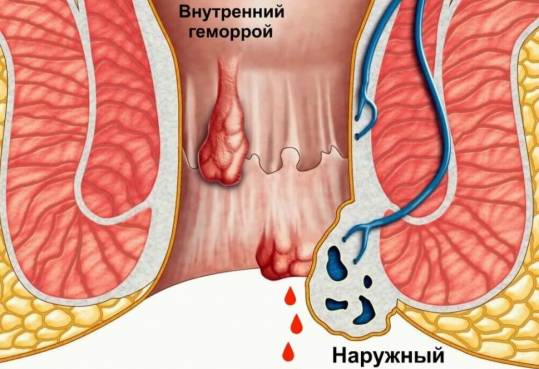
The external one is the most uncomfortable because the skin around it becomes irritated and gradually damaged. If a blood clot forms inside an external hemorrhoid, a sharp, sharp pain occurs. The blood dissolves and leaves behind waste that causes irritation and itching.
Internal hemorrhoids are often painless, even when bleeding occurs. It can extend beyond the anus, collecting particles of mucus and stool. Subsequently, painful swelling occurs in the anal area and an unpleasant sensation of anal itching. Its main manifestation is bleeding and prolapse of hemorrhoids.
Thrombotic hemorrhoids are an advanced stage of external hemorrhoids. This blood clot is ugly in shape, purple in color, painful, and can burst at any moment. If left untreated, it will cause the anal muscles to tighten and cut off circulation.
Causes
Hemorrhoids are mostly an acquired disease. However, in some cases it occurs due to a hereditary predisposition. For example, even at the stage of embryonic development, enlarged cavernous formations are formed, as a result of which there will be a tendency for the formation of internal hemorrhoids in the future.
Otherwise, the reasons are quite predictable and are mainly related to lifestyle:
- Insufficient physical activity and sedentary work.
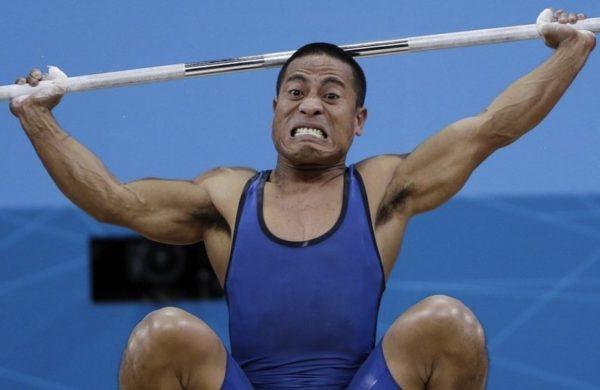
Hemorrhoids after lifting weights

Obesity and overweight
In addition, internal hemorrhoids can be caused by:
- tumor formations in the pelvis that disrupt blood circulation and intestinal motility;
- intestinal infections;
- trauma to the rectum, damage to its mucosa;
- atrophy of the rectal muscles.
All of the above applies to both women and men. However, in women there are a number of additional reasons.
- Menstruation period . During it, the flow of blood to the pelvis increases, as a result, the veins in the rectum can swell and any provoking factor at this moment can trigger the formation of nodes.
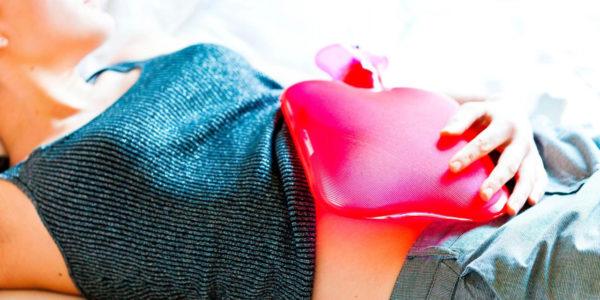
During menstruation, the risk of developing internal hemorrhoids increases
Even more interesting:
Effective injections for prostatitis
Is duphaston a hormonal drug?
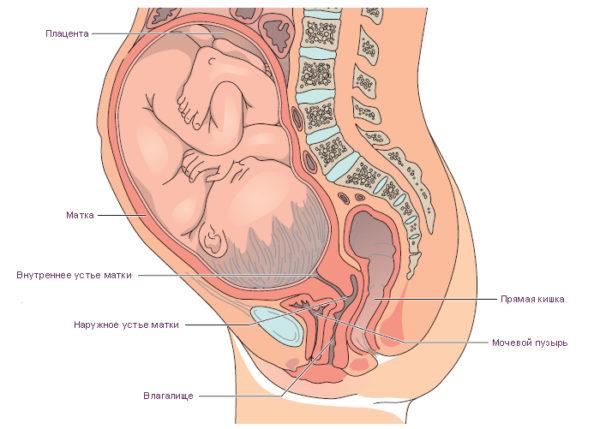
Position of the fetus in the uterus at the end of pregnancy
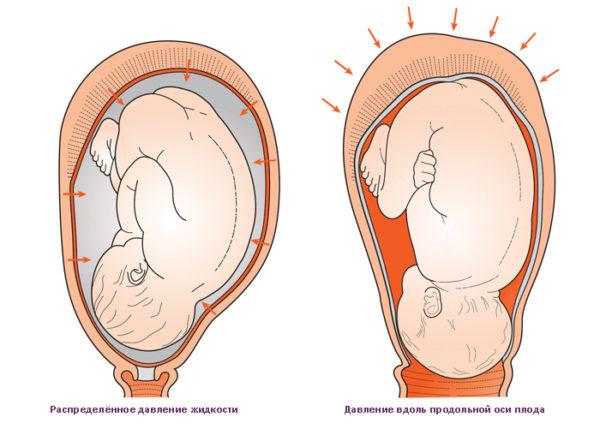
After childbirth, women often experience hemorrhoids
Basically, the triggers for the occurrence of hemorrhoids are: weak vascular walls and increased rectal pressure.
First signs
The first signs of developing hemorrhoids may include:
- painless bleeding during bowel movements, some bright scarlet blood can be seen on toilet paper;
- itching and irritation in the anal area;
- pain, discomfort in the anus;
- swelling around the anus;
- a blood clot in the form of a lump that has formed around the anus, which may be painful when touched.
The symptoms of hemorrhoids depend on their location.
Symptoms
Clinical manifestations of hemorrhoids in females are individual in nature and completely depend on the stage of the disease, as well as the structural features of the female body.
This pathology never forms in one day - it is characterized by gradual development. The expression of the first symptoms of internal hemorrhoids in women is often ignored, which is why patients themselves provoke the development of a severe course of the disease. Thus, the initial signs of such a pathology can be considered:
- discomfort and sensation of a foreign object in the anus;
- the appearance of minor mucus impurities in the stool;
- a few drops of blood that remain on the toilet paper;
- itching in the anus.
As the disease progresses, the following symptoms begin to appear:
- burning and pain in the anus, which is felt not only during bowel movements, but also during prolonged sitting;
- bowel dysfunction, which results in constipation. If this symptom is not treated in a timely manner, it can cause intestinal obstruction;
- feeling of incomplete emptying;
- increased rectal bleeding;
- increase in abdominal size;
- false urge to defecate.
It follows from this that the nature and intensity of expression of the signs of the clinical picture goes through several stages:
- initial – characterized by the beginning of the formation of hemorrhoids. Symptoms in this case appear rather weakly or are completely absent;
- progressive – characterized by a gradual increase in the size of the hemorrhoid, which increasingly narrows the anal canal. During defecation, fecal matter puts pressure on it, which becomes a source of pain. Internal nodes that were localized near the anus may fall out, and after the end of the emptying process they independently return to their place;
- developed hemorrhoids - the progression of the disease entails a significant increase in the volume of the nodes, which leads to disruption of the structure of blood vessels and the structure of the mucous layer of the rectum. Such conditions lead to the manifestation of pain and other symptoms of the disease not only during bowel movements, but also during any physical activity or severe coughing. Large knots fall out, but can no longer return on their own, which is why they have to be set with your fingers. In some cases, even manual intervention will not help get rid of the node falling out.
General symptoms
Few people know what sign you should first pay attention to when hemorrhoids begin. First of all, this is the appearance of blood during bowel movements. Rectal bleeding or blood in the stool is never normal. This may be associated with hemorrhoids, but there may also be deeper causes that carry risks to life.
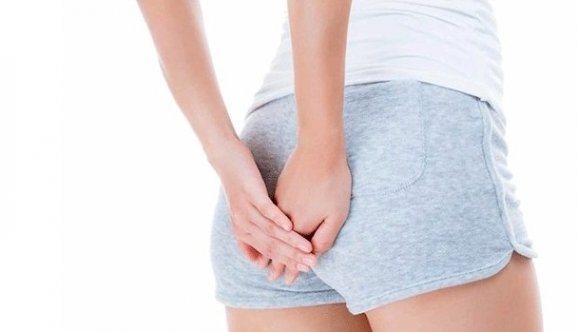
With inflammation, mucus appears and seeps out. It causes irritation of the skin around the anus and itching.
External hemorrhoids behave differently. This may be a pineal-shaped protrusion around the anus, the appearance of hemorrhoids that can be felt, burning, itching.
With thrombosed external hemorrhoids, a blood clot forms in one of the veins of the anal canal. The reason for its occurrence is stagnation of blood flow in the vessels and infringement. This causes severe pain. At this time, a painful blood clot is felt in the anus.
Traditional methods of treating internal hemorrhoids
To treat internal hemorrhoids in women, quite simple but effective methods of traditional medicine are often used, which allow you to get rid of the disease at home. As a rule, for traditional methods of therapy and prevention, she usually uses herbal preparations, decoctions, tinctures, natural products and oils.
Among the most common methods of home treatment for hemorrhoids are:
- Homemade suppositories - effectively help cope with irritation and infection inside the colon; for their preparation, a special cone-shaped form or plain paper is usually used; the form is filled with a medicinal composition of propolis, honey, potatoes, chamomile, calendula, sea buckthorn oil and other ingredients, then placed in refrigeration chamber for hardening;
- Homemade ointments and gels are an effective and completely natural remedy for hemorrhoids, which helps reduce pain, irritation around the anus, and also promote rapid healing of cracks and wounds on the walls of the colon; ointments are usually prepared based on herbs, aloe, Vaseline, and potatoes are often used , birch tar. Sea buckthorn oil, propolis, honey and other ingredients;
- Baths - help to quickly calm irritation, relieve itching, burning, eliminate pain and swelling, usually prepared from plant decoctions, decoctions of chamomile, calendula, nettle, plantain, oak bark, and celandine are added to the water; Oils are also often used to soften the effect of the bath;
- Compresses and lotions - local application of products helps to quickly suppress the painful syndrome, reduce irritation and other symptoms; as compresses it is useful to apply ice, potatoes, garlic, aloe, carrots, clay to the back point.
Who to contact
The first question that worries a person faced with the symptoms of a delicate pathology is which doctor will help get rid of pain and bleeding.
A doctor who professionally relieves hemorrhoidal disease is a proctologist or coloproctologist. There is a misconception that they should be contacted when the disease is in the developing stage. Initial symptoms are no less important and require consultation with a specialist. If a woman is pregnant, then first of all she should contact a gynecologist. The doctor will determine the causes of the disease, outline treatment options, and if necessary, refer you to a proctologist.
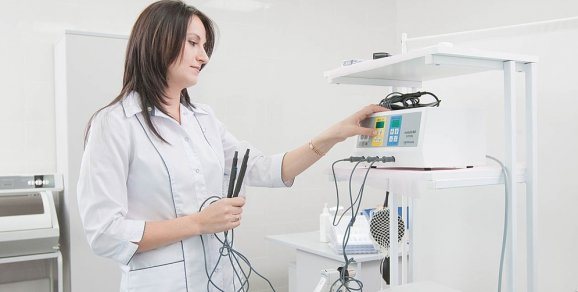
Functions of a proctologist:
- appointment at the clinic;
- manual examination of the patient, prescription of diagnostic procedures, the purpose of which is to identify complications;
- recognition of the type of hemorrhoids;
- prescription of drug treatment;
- control over the healing process;
- discussion with the patient of methods of disease prevention;
- if necessary, referral to a surgeon.
The responsibilities of a proctologist surgeon include the following functions:
- referral for surgery on an outpatient basis, using minimally invasive techniques;
- performing hemorrhoidectomy in a hospital setting;
- prescribing medication and homeopathic treatment during the rehabilitation period of the patient.
If the disease factors are minor, you can consult a general practitioner. He will prescribe medications and tell you how to carry out treatment at home.
First aid for hemorrhoids in women
Changing your position may reduce the pain slightly.
Almost every woman has heard something about hemorrhoids at least once. But when such problems begin for her, she gets upset and doesn’t know what to do. Of course, if after defecation you start bleeding profusely and your health suddenly worsens, then you should definitely seek help from a specialist. But if the symptoms are mild and you are only worried about discomfort in the anal area, then you can try to alleviate your condition at home.
Basic rules of first aid: • Try to remain calm. If you worry too much, your heart rate will increase and tremors will appear. All this will immediately have a negative impact on bowel function • Try a different position. If you feel severe pain, then change your body position. With these actions you can normalize blood circulation in the pelvis • Sit on the ball. An ordinary large rubber ball helps to combat this problem very well. In case of exacerbation of pathological processes, it is enough to sit on it for 10-15 minutes and the pain will subside a little • Wash yourself after defecation. It will be better if you do not use toilet paper after bowel movement. The best option in this case would be washing. • Adjust your diet. During illness, you must adhere to a special diet. The menu should be designed so that it contains products that help soften stool • Ice suppositories. If the bleeding is severe enough and you have to wait a long time for the doctor to arrive, you can stop the bleeding with small frozen cubes of water. All you have to do is insert them carefully into the anus
Complications
An advanced form of the disease always leads to complications. The consequences of inflammation of hemorrhoids in women often manifest themselves in the genitals. An infection introduced during this period causes thrush and dysbacteriosis. It is especially dangerous not to treat hemorrhoids that appear during pregnancy.
Complications and consequences:
- Thrombosis. The advanced stage of hemorrhoids leads to a general inflammatory process and progressive varicose veins in the anal canal.
- Cracks in the anal passage. Damage caused by internal hemorrhoids can gradually expand and spread into the crypts of the anal canal. In this case, there is a danger of cryptitis appearing.
- Anemia. Constant loss of blood from hemorrhoids leads to decreased hemoglobin, increased fatigue, general weakness and weight loss.
- Acute and chronic paraproctitis. An infection that penetrates through the mucous membrane into the rectal area causes the formation of pus. In the future, breakthroughs of the abscess onto the skin with the formation of a fistula are possible.
- Purulent infections. Microcracks formed on the mucous membrane during exacerbation of hemorrhoids are open gates for the penetration of infections. Infection occurs through the ingestion of fecal microparticles, even when hygiene standards are observed.
- Nonspecific ulcerative colitis. This inflammatory phenomenon occurs against the background of exacerbation of hemorrhoids. The processes that occur in the body during this period lead to the appearance of ulcers, thinning and destruction of the colon mucosa.
- The occurrence of fistulas. The formation of a fistula in the intestine can be a direct consequence of inflammation of hemorrhoids.
- Gas gangrene. In rare cases, aerobic pathogenic bacteria penetrate through anal microcracks. With their help, gangrenous foci develop. The disease is complicated by blood poisoning, it affects the limbs, and possible damage to the uterus.
- Tumor in the anal canal. Untreated hemorrhoids are dangerous. It may be a harbinger of malignancy.
Do not think that rectal bleeding is associated only with hemorrhoids. It can also occur with other diseases. If the bleeding that occurs is accompanied by disturbances in the intestines, or the color of the stool changes, you should definitely consult a doctor. All signs together may indicate colorectal or anal cancer.
How to treat female hemorrhoids?
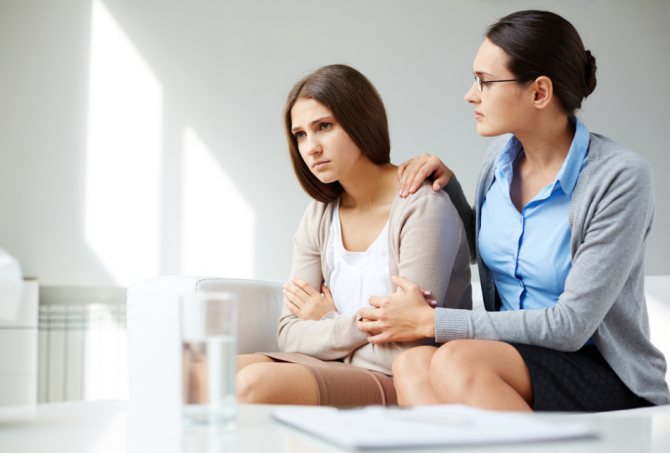
With the right approach, hemorrhoids respond quite well to treatment. After the clinical signs of the pathology disappear, the woman just needs to adhere to proper nutrition and lead an active lifestyle. But if it turns out that the disease has become chronic, then its treatment will take quite a long time. There are cases when the disease does not respond to drug treatment and then the patient has to undergo surgery.
Recommendations for the treatment of hemorrhoids in women: • Until the pathology becomes chronic, sclerotherapy combats it quite effectively • Rectal ointments and suppositories can be used to reduce pain • Antibiotics, laxatives and phlebotropic agents are used to improve the general condition and normalize bowel movements • Gives a fairly good result ligation. After special rings are placed on the cones, they fall off on their own • Cryotherapy has also proven itself well. The nodes are exposed to sub-zero temperatures for just a few minutes, and when they thaw, the tissues that made up the lumps die and wounds form in their place.
Diagnostics
Identifying the disease is not particularly difficult for a specialist. A conversation with a patient who complains of symptoms that arise during an exacerbation of hemorrhoids will be sufficient. But the final diagnosis is made after other examination methods. It is mandatory to examine the colon to exclude other causes of bleeding.
Direct diagnostic methods include:
- digital examination of the anus;
- examination using an anoscope, which allows you to see and evaluate the nodes;
- performing rectoscopy with a special device with which you can see the rectum and sigmoid colon;
- Carrying out irrigoscopy by filling the rectum with a liquid mixture with barium allows you to see not only nodes, but also ulcers with tumors.
Functional diagnostics is used if other diseases are suspected. The diagnosis in this case is made by exclusion.
Symptoms characteristic of hemorrhoids may appear in other diseases:
- tumor in the anal area and rectum;
- rectal damage;
- polyps;
- Crohn's disease;
- helminthiasis;
- psoriasis.
Burning and itching in the anus may indicate the presence of diabetes.
Internal hemorrhoids symptoms in women how to treat photo
Hemorrhoids are a disease characterized by inflammatory processes of hemorrhoids located on the inner wall of the rectum, near the anus. Hemorrhoids are painfully dilated veins that form folds and nodes on the mucous surface of the rectum.
Sometimes entire plexuses of such nodes are formed - hemorrhoidal cones. Stagnation and overstrain in these areas shift the nodes closer to the exit, where, with impaired blood supply, they unnaturally increase in size and become deformed.

Hemorrhoids are a delicate problem that patients are embarrassed to talk about. For this reason, the disease is often diagnosed in advanced stages. The main etiological factors for the occurrence of hemorrhoids are:
- Pregnancy and childbirth. Unfortunately, such a physiological process as pregnancy followed by childbirth can also cause hemorrhoids. This is due to overfilling of the pelvic veins and increased pressure in them.
- Sedentary lifestyle. The lack of regular physical activity, which suffers from the majority of the inhabitants of our planet who do not engage in sports, is also a risk factor for the occurrence of hemorrhoids. Many modern people neglect physical activity, replacing it with passive relaxation near the TV with a bag of chips and a bottle of beer. Sedentary work in the absence of physical activity is the main cause of blood stagnation in the pelvis.
- Improper and unbalanced nutrition. Hemorrhoids are more common in people who overeat. Excessive intake of fried and fatty foods, as well as sweets and smoked foods, is one of the main risk factors for the occurrence of this disease. An aggravating factor in the development of the disease is the lack of fermented milk products, cereals and foods containing fiber - fruits and vegetables - in the diet. Poor nutrition is the main cause of constipation, which leads to increased pressure on the pelvic choroid plexus. Next, blood stagnation occurs in the pelvis, which leads to the occurrence of internal hemorrhoids, the symptoms of which may at first be minor, but become more intense over time. An adequate diet with plenty of fiber is one of the main preventative methods for preventing hemorrhoids. It should be noted that hemorrhoids can also be caused by low fluid intake.
- Excessive physical activity. Hemorrhoids are often found in athletes who regularly lift heavy objects and experience increased physical activity. At risk for the incidence of hemorrhoids are people who are professionally involved in weightlifting, bodybuilding, and strength sports.
The occurrence of hemorrhoids can also be provoked by other diseases, such as pelvic tumors, poor heredity (a history of hemorrhoids in parents and close relatives).
At first, the signs of internal hemorrhoids do not really bother the patient. Symptoms begin to increase as the hemorrhoids increase in size. The clinical picture depends on the stage of the pathological process.
1) First stage. Cavernous formations are small, so protrusion of the mucous membrane does not bother a person much. Only occasionally, when they are damaged by hard feces, inflammation occurs. The very first symptoms of hemorrhoids are:
- feeling of discomfort in the rectal canal after bowel movement;
- burning and itching in the anorectal area due to the inflammatory exudate (fluid) secreted by the blood vessels;
- occasionally finding traces of blood on toilet paper after visiting the restroom.
2) Second stage. If hemorrhoids are not treated, the pathological process in the rectum only intensifies, moving to a more severe stage, which is characterized by:
- an even greater increase in hemorrhoidal nodules;
- the release of enlarged cavernous formations from the rectum (usually during defecation) and their independent return to their usual place;
- discomfort and sensation of finding a foreign object in the anal canal;
- more intense bleeding;
- pain when going to the restroom.
3) Third stage. The clinical picture is “increasing”, the severity of negative symptoms is only increasing:
- bleeding from the rectum becomes more frequent and intensifies;
- hemorrhoidal cones come out of the anus during any physical activity, and you have to insert them back with your own hands;
- pain also increases, especially if anal fissures and inflammation are added to hemorrhoids.
4) Fourth stage. This is an advanced form of the disease, in which all the signs of varicose hemorrhoidal veins are expressed as clearly as possible:
- pain is constantly present, and simple actions such as moving and sitting only aggravate the pain;
- cavernous formations regularly sag, and it is not possible to insert them back into the anus on your own;
- bleeding may be so intense that it is difficult to stop.
The rate of increase in adverse symptoms largely depends on the number of pathogenic factors and characteristics of the human body.
source
Not everyone knows what internal hemorrhoids look like (photo 1), since the symptoms are minor and the lumps cannot be felt, and discomfort is felt only from the inside. Internal hemorrhoids in women (see photo 2) and men can lead to complications if the pathology is not treated. Treatment of the initial stage can be conservative.
Internal hemorrhoids (photo 1) become an unpleasant surprise for many patients - there seem to be no prerequisites for the development of the disease, but the initial stage of hemorrhoids and the feeling of discomfort during bowel movements do not give people peace. The initial stage of internal hemorrhoids is manifested by the following symptoms:
- pain and discomfort during bowel movements are the first signs that patients encounter. The severity of pain varies from person to person, depending on the presence of complications such as anal fissures, etc. Some patients do not feel any signs of hemorrhoids at all;
- if the cones of internal hemorrhoids are significantly enlarged, then they can fall out, although they then hide. Immediately after defecation, you can feel the lumps pinched by the anal sphincter;
- burning and itching during bowel movements become constant companions of patients, since there is constant irritation of the rectum.
Blood in internal hemorrhoids appears in the third and fourth stages of the disease. Usually at this time the pain intensifies, the bumps fall out more often, so there is no doubt about the presence of hemorrhoids.
Internal hemorrhoids in women (photo 2) are practically invisible at the initial stage, but hemorrhoids in pregnant women usually progress rapidly at an early stage. Symptoms in women increase when the hemorrhoidal node is filled with blood and the walls of the vessel are stretched excessively. At this stage, the movement of feces with internal hemorrhoids constantly affects the node itself, it gradually stretches and moves towards the anus. Internal hemorrhoids of stage 2 are a clearly formed large node that descends to the sphincter; when straining, it can fall into the intestinal lumen, but usually quickly reduces on its own.
If the feces, as they move, cause injury to the protruding part of the vessel, bleeding may occur. These symptoms of hemorrhoids in women cannot be missed - blood remains even on toilet paper. Typically, the amount of bleeding in women is small at first, but as the disease progresses, some patients lose almost 50 ml of blood with one aggressive act of defecation.
The internal node of stage three hemorrhoids protrudes more and more from the intestinal wall and interferes with the normal passage of feces. Internal hemorrhoids in women (photo below) look like larger and larger protrusions, which is why so-called goat feces appear - pea-shaped discharge that is formed when passing through an enlarged hemorrhoid.
In the fourth stage, signs of internal hemorrhoids in women become more noticeable. The hemorrhoidal node has already fallen out of the rectum; it needs to be reset by hand. The node may become pinched and an inflammatory process may begin.
Internal hemorrhoids in men (photo 3) are as hidden as in women. Symptoms in men at the initial stage are noted only by a burning sensation in the rectal area, which intensifies with the passage of feces and during defecation.
At the second stage of development of the pathology, internal hemorrhoids look more pronounced - nodes located in close proximity to the anus can fall out and be palpated with the fingers, but they quickly hide as soon as the sphincter closes. Internal hemorrhoids of the 2nd degree (photo in the gallery) are accompanied by burning and heaviness in the rectum.
In the third stage, internal hemorrhoids in men look like permanent swollen bumps in the anus area. They hurt, blood appears, and if pinched, the nodes can become inflamed, causing severe pain.
The fourth stage of pathology is characterized by a whole array of large hemorrhoids. They bleed heavily, and pain is present all the time, and not just when pinched. Symptoms of hemorrhoids in men require immediate treatment of the pathology.
External and internal hemorrhoids (see photo 4) are quite often combined together. External (external) and internal hemorrhoids differ in the location of the hemorrhoidal node in the rectum. With internal hemorrhoids, the pathological node lies deep in the rectum. During examination, it is not visible and patients do not detect lumps when palpating the anus. Only doctors can diagnose pathology using special instrumental techniques.
Internal hemorrhoids are prone to bleeding; if you strain during bowel movements, they may fall out. They are inserted inside independently or with the help of the patient.
External hemorrhoids are felt immediately. The nodes protrude to the outside, they cannot be adjusted. Blue nodes filled with blood constantly hurt and periodically become inflamed; external hemorrhoids also threaten vessel thrombosis.
It is also worth mentioning that external hemorrhoids differ from internal hemorrhoids and the membrane of the hemorrhoidal node. The outer node is covered with skin, but the inner node has a mucous coating.
Treatment approaches depend on the size of the hemorrhoids and the degree of development of the pathology. If internal hemorrhoids (Figure 5), early treatment can be conservative. Drug therapy primarily involves the use of suppositories and ointments. Patients usually prefer to use suppositories - they are easy to use and provide an excellent therapeutic effect.
Among the most effective drugs against internal hemorrhoids are suppositories Relief, Relief Advance, Relief Ultra, Proctoglivenol Uno, Proctosedyl. With the help of these drugs, you can eliminate postpartum hemorrhoids - one of the common complications of pregnancy. To prevent thrombosis, the drugs Proctosedil and Gepatrombin G are used.
In patients with weak blood vessels, it makes sense to prescribe venotonics - Detralex and Phlebodia. Both drugs help strengthen the venous wall and prevent the formation of new hemorrhoids. Treatment of internal hemorrhoids in women with these drugs will help avoid complications during re-pregnancy.
If hemorrhoids do not respond to conservative treatment, then surgical methods are used. Internal hemorrhoids are removed using two surgical options. One option involves removing a small part of the intestine, which leads to disruption of the blood supply to the hemorrhoid. In the second type of operation, the internal cones of hemorrhoids (see photo 5) are cut off, and the incision site is sutured, which prevents further stagnation of blood.
source
Hemorrhoids (old name: kidney) is a systemic disease characterized by a chronic course and the formation of hemorrhoids.
Despite the fact that the disease is “purely male,” women can also suffer from it. During the course of the disease, the development of unpleasant, painful symptoms is observed, which requires timely treatment.
It is possible to cure hemorrhoids at home quickly in women using traditional medicines or traditional medicine these days.
But before treating hemorrhoids, it is necessary to determine the causes and symptoms of female hemorrhoids.
We'll look at them next. This will make it possible to select the most effective means.
The causes of the disease in representatives of the weak in most cases may be due to:
- constipation;
- sedentary lifestyle;
- after pregnancy;
- after complications during childbirth.
- vascular pathologies;
Women who lead a predominantly sedentary lifestyle are at risk. If the functioning of the digestive system is impaired, this can increase the risk of disease.
Hemorrhoids can appear due to tumors and inflammatory processes in the pelvic area. With a tendency to develop thrombosis, the risk of pathology increases significantly.
Hemorrhoids are characterized by the presence of several forms. He can be:
- Internal. The location of the nodes is the lumen of the rectum. When the choroid plexuses expand, they protrude from the rectal mucosa. Since hemorrhoids are located internally, it is almost impossible to identify them by external signs.
- External. This form of pathology is characterized by protrusion of nodes outside the anus. That is why the patient can detect a hemorrhoidal lump on his own.
- Combined. This form of pathology is characterized by the location of nodes on the external and internal sides of the anus.
Hemorrhoids in women (see photo above) are characterized by the presence of corresponding symptoms. The pathological process is accompanied by:
- discomfort in the anal area;
- patients complain of severe itching and pain;
- internal hemorrhoids are accompanied by a sensation of the presence of a foreign body in the rectal area;
- with hemorrhoids, mucus or blood is released from the anus;
- During bowel movements, increased pain is observed.
If the pathological process is not treated in a timely manner, the appearance of cracks is diagnosed.
See below, in the photo the initial stage of the disease:

Treatment of hemorrhoids at home in women should be comprehensive.
In this case, it is necessary not only to take drugs orally, but also to use agents that have a local effect.
In order to ensure the effectiveness of hemorrhoid treatment, it is necessary to correctly select the drug.
In this case, the effect of the medicine and the symptoms of the disease are taken into account. For hemorrhoids, patients are prescribed:
- Anesthetics (with the help of drugs, pain is eliminated), patients are prescribed: Benzocaine;
- Lidocaine.
- Natalsid;
- Etazole sodium;
- Bufexamaca;
- Belladonna extract.
- Posterized.
- Heparin ointment.
- Troxevasin,
If the selection of drugs is carried out correctly, this will ensure the most effective treatment of the pathological process.
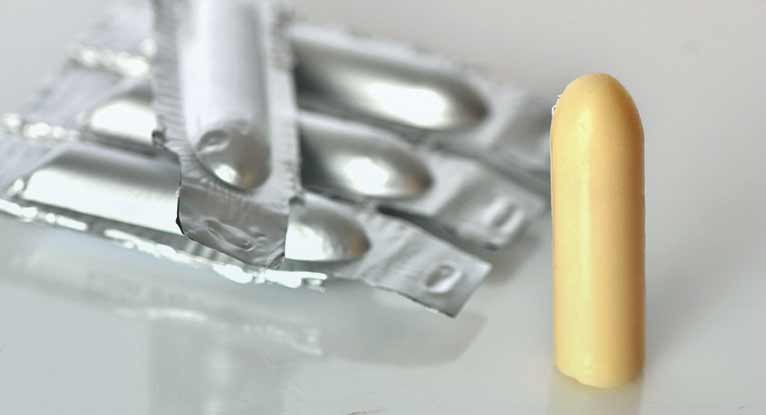
If women have internal hemorrhoids, then the use of suppositories (candles) is recommended for its treatment. The most common applications are:
- Posterized . With the help of this medication, the performance of local immunity is stimulated. The drug suppresses the development of the inflammatory process. It is recommended to use the medicine twice a day.
- Ichthyol candles . The drug has bactericidal and anti-inflammatory properties. That is why it is recommended to use the drug twice.
- Rectal suppositories with propolis. The medicine is developed on the basis of propolis and cocoa butter. Due to its wound-healing properties, it is used for cracks and ulcers. The product is characterized by the presence of a bactericidal effect, which allows it to fully combat the symptoms of pathology. The medication is used 1-2 times a day.
- Sea buckthorn suppository. During the period of use of the drug, the wound healing process is significantly accelerated. The medicine has antiseptic properties. It is recommended to use the medication 1 to 2 times a day, depending on the severity of the disease.
- Homeopathic suppositories. Medicines are being developed based on a variety of medicinal plants - witch hazel, calendula, tea tree oil. Ensures the safety of using suppositories and allows for treatment of various categories of patients.
In women, the disease must be treated correctly. Before inserting a candle, it is recommended to carry out hygiene procedures in the anal area.
The person lies on his side, pulls his knees to his stomach and inserts a candle into the anus. To ensure the dissolution of the medication and its uniform distribution throughout the rectum, it is recommended not to get up for half an hour.
Most suppositories should be used in the evening before bed.
Suppositories are characterized not only by their effectiveness, but also by their safety, which makes it possible to quickly treat hemorrhoids at home with their help.
For the external form of the disease in women, treatment is carried out using ointments.
They are characterized by a local effect, which makes it possible to speed up the process of treating the disease.
In most cases, patients will be prescribed:
- Proctosan . The drug is characterized by the presence of anti-inflammatory, drying and wound-healing properties, which makes it possible to use it at various stages of the disease. The drug does not contain hormonal components, which ensures the safety of its use. The product is applied to hemorrhoids twice a day.
- Aurobin . It belongs to the category of combined drugs, relieves pain, and has antiseptic properties. The drug contains hormones; it is not recommended to use it for a long period. For viral, fungal and infectious processes in the anal area, the use of the medicine is prohibited.
- Troxevasin . With the help of the medication, the tone of the veins and capillaries is increased, which prevents the process of thrombus formation. The use of the medicine is recommended twice a day.
- Heparin ointment. It is recommended to use the medicine to eliminate the possibility of thrombus formation in hemorrhoids. It is recommended to use the medication for acute inflammation of the hemorrhoidal veins. In case of hormonal bleeding and allergies (there will be itching and rashes) to the composition, you should stop using the product.
- Fleming's ointment . The product is developed on the basis of calendula, menthol, and witch hazel. Due to the herbal composition of the drug, its use is permitted for the treatment of various categories of patients. This remedy combats pain, itching and bleeding. The action of the medicine is aimed at strengthening the walls of blood vessels, as well as normalizing blood circulation.
Ointments are characterized by effectiveness in treating the disease. Before treating a pathological process with a specific medicine, it is necessary to determine contraindications to it.
Before applying a certain composition, it is necessary to rinse and dry the anal area. With the help of ointments, you can eliminate symptoms in women as quickly as possible and speed up the treatment of the disease.
If women have the initial stage of the disease, then this requires taking pills in combination with local agents. Experts recommend that patients take the following at home:
- Detralexa . It belongs to the category of phlebotropic drugs, which allows it to cure the disease in the shortest possible time. When using the medicine, vascular tone in the rectal area increases, as well as capillary permeability is normalized. If a person has hypersensitivity to the components of the medicine, then its use is strictly prohibited. It is recommended to use from 4 to 6 tablets, depending on the stage of development of the disease.
- Troxevasin . It is a systemic venotonic and anti-inflammatory drug. The drug can be taken in the 2nd and 3rd trimester of pregnancy. To treat the pathological process, patients are recommended to take capsules twice a day.
- Troxerutin . The drug is developed on the basis of medicinal plants, which significantly reduces the number of contraindications. With the help of the medication, capillaries are strengthened, as well as the immune system is activated. The use of the drug is recommended for bleeding. In case of exacerbation of the pathological process, it is not recommended to use the medicine.
- Asklezan A. drug is a dietary supplement that improves blood circulation. A medicine has been developed based on hazelnut extract, which makes it possible to use it for a long time. During pregnancy and lactation, taking the medication is strictly prohibited. If a woman has an individual intolerance to the components of the drug, then its use is strictly prohibited.
Hemorrhoids in women require complex treatment. In this case, it is imperative to use tablets that act from the inside.
Treatment at home for women with hemorrhoids using baths has proven excellent. They are carried out using certain plant decoctions.
Baths are characterized by the presence of an antiseptic, analgesic or restorative effect.
The presence of a particular one directly depends on the characteristics of the bath preparation. She may be:
- Hot bath to relieve pain and inflammation. To prepare the bath, it is recommended to use calamus, chamomile decoction, onion peels, sage, calendula, burdock root, horse chestnut, St. John's wort, garlic and water pepper. It is necessary to take a hot bath for 15-25 minutes.
- Warm bath. The procedure is aimed at strengthening blood vessels, eliminating itching and treating small cracks and wounds. Patients are recommended to take baths using manganese, oak bark, garlic, chamomile, milk, and onion peels. Taken for at least 30 minutes. and no more than 40.
- Cool bath for hemostatic effect. The use of the product is recommended to eliminate pain. The bath should have a temperature of up to 20 degrees. The first session should last 5 minutes. It is recommended to gradually increase the treatment time. Bath solutions are prepared from celandine, chamomile, plantain, and nettle.
Baths for hemorrhoids are characterized by rapid action, so they are used to eliminate the first symptoms.
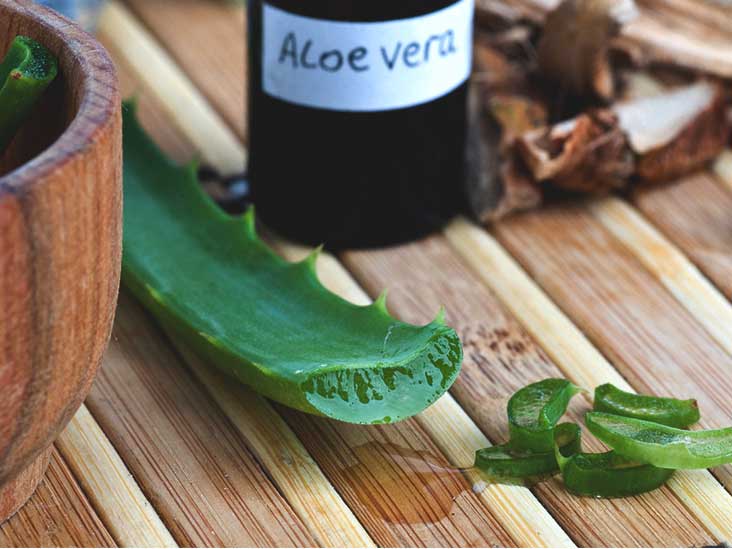
Before treatment with folk remedies, it is necessary to determine what hemorrhoids look like in women.
Traditional medicine will not only eliminate the signs of the disease, but also speed up the process of treating the disease.
The preparations are prepared on the basis of:
- Highlander. A tablespoon of pre-crushed and dried above-ground parts of the plant is poured with 0.5 liters of boiling water and left for 2 hours. It is recommended to drink the prepared infusion in three doses throughout the day.
- Propolis. This product is dissolved in boiling water and infused for 24 hours. Cotton wool is moistened in the resulting infusion and applied to the anus for 15 minutes. This method for treating the pathological process is used for at least two weeks.
- Honey. This component is mixed with beet juice in equal quantities. This product is widely used for lotions.
- Potato. Take a potato tuber and cut a candle out of it. It must be inserted into the anus in the evening. In the morning, the suppository will come out on its own along with the feces. For external hemorrhoids, you can prepare a compress. For this purpose, potatoes are grated. The mixture is applied to the anus for 6 hours.
- Raspberries. This plant is characterized by the presence of anti-inflammatory properties. Take a few tablespoons of the leaves of this plant and pour a glass of boiling water. After two hours of infusion, the drug is filtered and taken orally twice a day.
- Rose hip. Used to strengthen the walls of blood vessels. The fruits of this plant must be crushed and poured with boiling water. The drug is infused for 10 hours. After this, a tablespoon of honey is added to the composition. Reception is carried out three times a day, 50 milliliters.
- Aloe . Take a few leaves of an old plant and place it in the refrigerator for a week. After this, a small piece of aloe is cut off and the skin is removed from one side. The plant is applied to the anus with its pulp for 4 hours.
- Herbal collection. Water pepper grass, oak bark, and toadflax flowers are carefully crushed and mixed with lard. The mixture must be simmered over low heat for 10 hours. After filtering, the drug is used to lubricate hemorrhoids. For internal inflammation of the hemorrhoidal veins, it is necessary to make a gauze swab, lubricate it with ointment and insert it into the anus at night.
- Chamomile. A decoction of this plant is used for lotions and making candles. A few spoons of chamomile flowers are poured with boiling water and left for two hours. After filtering, a piece of gauze is moistened in the product and applied to the hemorrhoidal cones. To prepare candles, the broth must be poured into molds and frozen.
Thanks to the presence of a huge number of traditional medicines, it is possible to choose the most effective one for a certain form of hemorrhoids.
To ensure maximum effectiveness of pathology therapy, it is necessary to adhere to a diet. With its help, constipation is eliminated, against the background of which complications are often observed.
Patients are recommended to eat foods that contain large amounts of fiber. In this case, women are recommended to consume vegetables and fruits:
To eliminate complications of pathology, constant consumption of fermented milk products is recommended:
Patients are advised to strictly adhere to the drinking regime. In addition to tea, coffee and other drinks, it is recommended to drink 1.5 liters of water daily.
To avoid constipation, you should avoid certain foods. Women are not recommended to consume flour products:
- pasta;
- white bread;
- buns;
- hard-boiled eggs.
Drinking alcoholic beverages during the treatment of hemorrhoids is strictly prohibited. The patient's diet should not consist of boiled lean meat and steep broths.
Starch and gelatin are strictly prohibited.
That is why patients need to give up jelly, jelly, and jellied meat. The consumption of certain vegetables and fruits is prohibited:
Hemorrhoids belong to the category of complex diseases that are characterized by a chronic course. The choice of a specific medicine is carried out in accordance with the individual characteristics of the woman and the stage of development of the pathology.
source
First aid
If hemorrhoids are inflamed and not complicated by bleeding, you can ease the attack by following some rules:
- Apply a cold compress to the sore spot. Cold affects blood vessels and constricts them. You can take a cool bath.
- Take painkillers with anesthetic. Lubricate the sore spot with rectal ointment containing anti-inflammatory and venotonic substances.
- Try to relax, lie down. If possible, adopt a position that will help relieve pain. It is best to lie on your side or stomach.
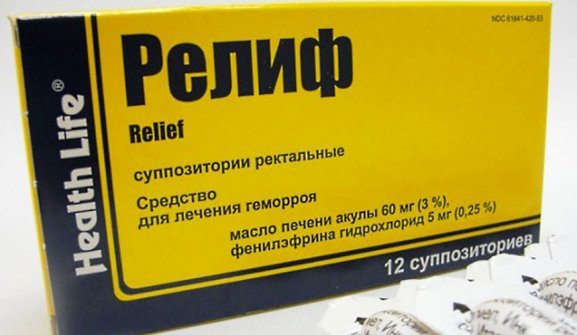
In case of acute inflammation with bleeding, the following procedures will help:
- cold bath or cold compress;
- taking medications that stop bleeding (if this is possible for health reasons);
- use of rectal suppositories with a hemostatic component.
The use of various methods depends on the degree of exacerbation and individual characteristics of the person.
In cases of sudden exacerbation or heavy bleeding, it is better to consult a specialist.
The movement against hemorrhoids
If we cannot eliminate the causes of hemorrhoids, such as age and genetics, then no one forbids us to lead an active lifestyle.
After all, constantly sitting still causes blood stagnation in the pelvic organs. Venous blood fills the vessels and expands their lumen, forming hemorrhoids. A sedentary lifestyle and constant sitting are the most common causes of hemorrhoids in men. Drivers and computer technicians especially suffer from this. And if it is difficult for a driver to stop and warm up every half hour, then it will not be difficult for programmers. And the driver can purchase a special orthopedic pillow for the seat. And, most importantly, move more outside of work. Prevention is always better than cure.
Treatment
Regardless of the size and swelling of hemorrhoids, treatment is not prescribed unless there are acute signs. In this case, prevention is important. If you suffer from constipation, you need to reconsider your diet. For diarrhea, antidiarrheal drugs will be required, unless there are special contraindications, and dietary adjustments.
If hemorrhoidal symptoms develop, there are many treatment options. They depend on the situation and severity of the disease.
Internal hemorrhoids come in four stages:
- First stage. Internal nodes fall out of the anal canal and may bleed.
- Second stage. The nodes protrude through the anal verge when the intestines are tense, but return on their own after relaxation.
- Third stage. Hemorrhoids come out without tension. They can be pushed back in using your fingers.
- Fourth stage. Internal hemorrhoids remain protruding or prolapse and there is a risk of thrombosis if anal muscle spasms occur.
Depending on the degree of inflammation of the nodes, treatment is prescribed. It can be conservative or surgical. Treatment of hemorrhoids in women is not much different from general therapy.
Conservative methods
Treatment of 1st degree is carried out symptomatically. Cool baths for 20 minutes 2-3 times a day can be helpful. Spicy foods and alcohol should be avoided. You can use rectal ointments, creams, suppositories. Steroids are used to reduce inflammation. Stool softeners and anti-inflammatory medications help a lot.
Types 2 and 3 hemorrhoids are treated in the same way. Therapy includes minimally invasive treatment methods. These include:
- infrared photocoagulation;
- sclerotherapy;
- ligation of internal nodes with latex rings.
The first method is that infrared radiation acts on the pedicle that feeds the hemorrhoid. After radiation, a scar appears and the node dies. This procedure is also called cauterization. The whole process takes no more than 10 minutes.
Sometimes complications occur: pain, bleeding, necrosis and thrombosis of nodes.
The second type of therapy is carried out, as in the first case, by cauterization. A chemical substance is used as an active drug, or sclerosant. In case of thrombosis and strangulation of the node, the procedure is not performed.
Latex ring ligation is the most popular procedure due to its affordability. During this procedure, a latex ring is placed on the vascular pedicle of the node, after which it dies. The operation is easily tolerated by patients, but there is one drawback - only one node can be removed during the procedure. The next operation is indicated after 14 days.
Surgical intervention
Patients with stage 4 disease who have not responded to conservative treatment are offered surgical intervention. It involves the removal of swollen hemorrhoids and hemorrhoids. Removal is carried out using a laser or scalpel
During thrombectomy surgery, blood clots are removed during exacerbation of external hemorrhoids. The operation is performed under local anesthesia. If there are no side effects, the patient does not stay in the clinic for long.
In advanced stages of the disease, hemorrhoidectomy is performed. The operation has several options. In the first case, classically located groups of nodes are deleted. In some cases, the resulting wounds are not sutured, in others they are stitched. The operation is often performed with an ultrasonic scalpel in order to reduce trauma.
The second version of the operation involves suturing the rectal arteries feeding the nodes using a medical stapler. In this case, the vascular cushions themselves are not removed. Among the advantages of the operation are low trauma and rapid healing. This method does not allow you to remove external nodes.
Among minimally invasive treatment methods, suture ligation of hemorrhoidal arteries using a laser is gaining popularity.
What types of hemorrhoids occur in women?
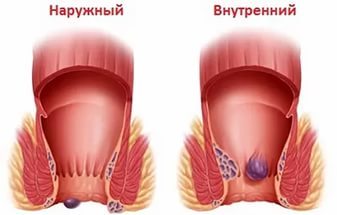
Since the treatment of rectal problems has its own characteristics and nuances, before you begin to eliminate the problem, it is imperative to carry out the most accurate diagnosis possible. Treatment will depend on the type of pathology and the severity of the disease. Usually, acute and not crushed hemorrhoids can be treated quickly enough, but if you miss the moment and the disease moves into the chronic stage, then be prepared for the fact that you will have to feel discomfort and pain for a long time.
Types of disease:
• Internal hemorrhoids in women. With this type of disease, painful tumors form on the rectal mucosa. They do not come out and cannot be palpated. The fact that there are lumps inside the intestines can be signaled by mucus and small blood discharge
• External hemorrhoids in women. A representative of the fair sex can easily diagnose this type of disease on her own. The development of the defect will be indicated by nodes located on the anus
• Combined hemorrhoids in women. Pathology of this type is considered the most severe.
With its development, hemorrhoidal cones form both inside the rectum and outside the anus
Diet
One of the leading causes of hemorrhoids is chronic constipation. To prevent it, it is important to eat foods high in fiber.
You can include various vegetables in your diet: tomatoes, beets, zucchini, pumpkin. It is useful to eat seaweed. It is recommended to eat up to 500 g of vegetables and fruits per day.

Pasta made from durum wheat can be used in first courses. The broths for them should be vegetable or fish. Cabbage soup, beetroot soup, and pearl barley soup are especially useful.
Meat and fish as sources of protein are always needed by the body. But a large amount of protein foods contributes to the development of constipation. Therefore, in percentage terms, dishes made from them should be no more than 20%. You should also pay attention to the cooking method; it is best to bake, boil or steam.
Nuts and dried fruits are good for digestion.
Use eggs and cereals in minimal quantities. Vegetable oils make intestinal motility work better.
Fermented milk products are healthy because they contain lactobacilli, organic acids, and bifidobacteria.
During the day you should drink more fluids, preferably plain water.
Disease of time
The venous wall is subject to aging. It wears out, like other tissues in our body. This is why hemorrhoids are a disease of age. The percentage of cases increases in older people. And in children this disease is extremely rare.
Since the treatment of the disease involves surgery, older people need to carefully monitor their diet and habits if they do not want to face such a problem. Time spares no one, but this does not mean that we are powerless in front of it.
Prevention
In order to prevent hemorrhoids from tormenting, you should change some life habits. Move more, especially when working sedentarily, review the foods you eat, and observe hygiene rules, especially after visiting the toilet.
You should give up bad habits such as smoking, alcohol, restrictions also apply to the consumption of spicy foods.
During pregnancy, pay special attention to nutrition. It is advisable to eat nutritious food rich in vitamins and microelements.
Simple exercises like walking and alternately relaxing and tightening the anal sphincter muscles will help improve blood flow and prevent constipation.
The health of each person is largely in his own hands. It is always easier to prevent a disease than to treat it.
Preventive measures against internal hemorrhoids
After you have managed to get rid of an unpleasant disease, do not forget about periodic treatment and disease prevention measures. For women, such measures are especially important, since it is the weaker sex that is most often subject to relapse.
To avoid the recurrence of internal hemorrhoids, you should adhere to the following recommendations:
- maintain a moderate diet;
- exclude fatty, smoked, spicy and heavy foods, fast foods;
- get rid of bad habits;
- consume hot drinks in moderation;
- increase physical activity, try not to sit in one place for a long time;
- try to choose chairs with soft upholstery rather than a hard surface;
- take complexes of vitamins and minerals;
- use ointments and gels to prevent hemorrhoids.
In addition, you should carefully monitor your personal hygiene, try to wash yourself after each trip to the toilet and do not neglect wet wipes. It will also be useful to walk more in the fresh air, avoid excessive physical activity and try to avoid stressful situations.

